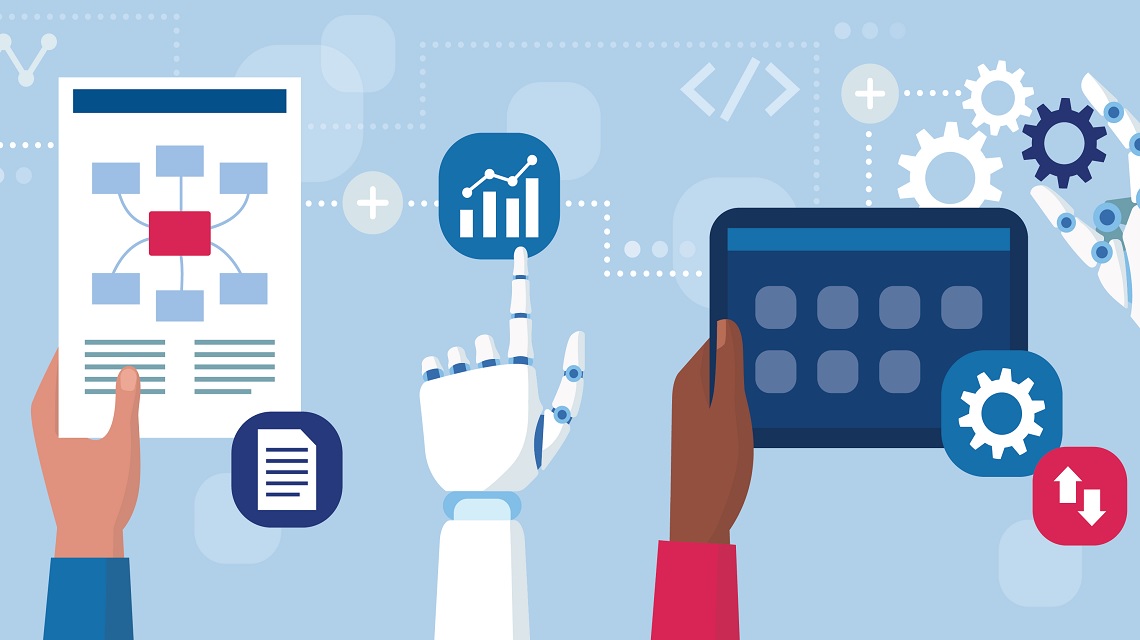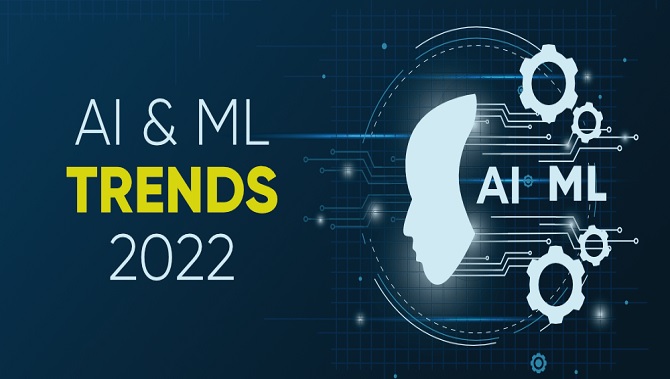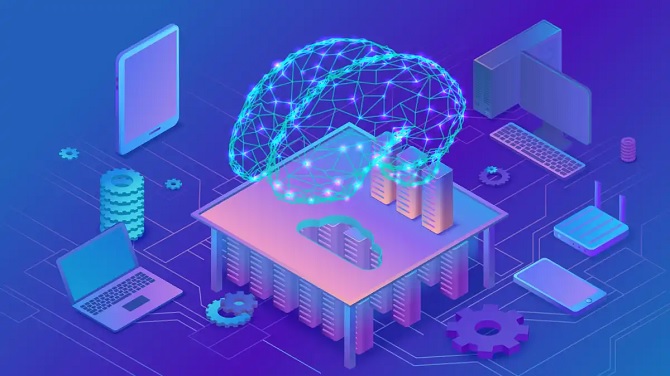Machine learning is being tagged as a prominent aspect of the tech revolution by artificial intelligence. With the correct collection of data, these technologies provide organizations with vital decision-making capabilities.
AI and machine learning are progressively becoming mainstream technologies for enterprise solutions, owing to their vast growth possibilities and excellent capabilities. It isn’t an exaggeration to claim that significant corporations pay attention to AI and machine learning developments. And, given the tremendous capacity, it’s safe to say that AI and machine learning are here to stay.
AI and machine learning technologies have made significant achievements in recent years, particularly since the commencement of the COVID-19 scenario.
Table of Contents
- 1 Top Al and ML Trends in 2022
- 2 Here are the Top AI and Machine Learning Trends to Watch in 2022
- 2.1 Hyperautomation
- 2.2 Improved Cyber Security
- 2.3 A Digitally Enhanced Workforce
- 2.4 AI Will Progress in the Future, but Humans Will still be Required
- 2.5 The Demand for Speech AI is Only Going to Grow
- 2.6 Artificial intelligence (AI) will Continue to Affect the Workplace
- 2.7 Low-Code and No-Code AI are Both Used in AI
- 2.8 Clouds are Rising
Top Al and ML Trends in 2022
New trends and discoveries will continue to emerge in 2022, pushing the limits of AI and machine learning.
Here are the Top AI and Machine Learning Trends to Watch in 2022
Hyperautomation
More firms would automate multiple yet repetitive operations involving vast information and data in 2022, thanks to AI and machine learning technologies. Robotic process automation (RPA) and intelligent business process management software will be used to increase the pace of industrialization in numerous industries in the future years (iBPMS). This AI and machine learning movement enable organizations to reduce their reliance on human labor while increasing their reliability, efficiency, and dependability. So, when it comes to the top AI and ML trends for 2022, hyper-automation solutions are leading the path for legacy procedures to be transformed to maximize resource productivity.
Leading businesses use hyper-automation to stay up with demand and close the supply gap to meet customer demands. Furthermore, obsolete procedures cause slowness, which results in significant losses for enterprises. As a response, businesses see hyper-automation as the essential tool for surviving and succeeding in their industry in 2022 and beyond.
Improved Cyber Security
The World Economic Forum recently said that cybercrime is a more significant threat to society than terrorism. Cybercrime becomes rampant, and cybersecurity solutions become sophisticated, as more intelligent but sophisticated robots linked to an extensive network gain control of each element of our life.
AI and machine learning tools have the potential to help solve this problem. AI/ML algorithms, for instance, could scan more significant network traffic and spot patterns of illicit virtual activity. This is expected to be the site of some of the most influential AI/ML technology advances in 2022. In this circumstance, cybersecurity might identify, assess, and protect your data from cyber-attacks using intelligent machines. Despite being available to digital organizations for a specific time, cybersecurity has become more potent due to its integration with AI and machine learning technology.
According to a survey, a mid-sized company receives notifications for over 200,000 intrusions every day. Dealing with the increasing number of cyber threats is challenging, if not impossible, even if you have a massive team of security professionals on staff. As an outcome, AI-powered cybersecurity could respond with various risks in order of importance, leaving no place or leakage for attacks to take root.
Artificial Intelligence would help numerous companies reduce hiring expenses by effectively handling abilities shortages in 2022 and beyond.
Because qualified data scientists are hard to come by and costly to hire, businesses would look for other possibilities, such as making the positions accessible to everybody.
Businesses that use Automated Artificial Intelligence (AutoAI) might provide analyst employment to scientists with varied levels of experience to do tasks like reviewing data streams, delivering real-time insights, and creating machine learning models.
Because of the price reductions and improved performance, these enterprises will be likely to develop rapidly.
A Digitally Enhanced Workforce
One of the most likely trends in the coming years is an augmented workforce in the digital space.
Several organizations have already incorporated machine learning and cognitive technology, so rather than a future in which people execute menial activities, we can anticipate a tomorrow in which people could concentrate on the customer. At the same time, robots tackle repetitive duties as they collaborate.
Creating an augmented digital workforce would go a long way in assisting organizations in scaling technologically, allowing employees to bypass time-consuming tasks and make better commercial choices quicker. Because the augmented digital workforce would automate a substantial portion of the problematic and tedious duties, organizations would prioritize developing and establishing solid connections with their consumers and combating issues successfully as they arise.
AI Will Progress in the Future, but Humans Will still be Required
Better and more effective AI technology would arrive in 2022 and beyond, and businesses would demand more from AI.
However, while AI would advance in the following years, people would continue to be essential in helping organizations scale since AI will not execute specific tasks that humans can.Once people are given the proper resources, they will detect and resolve problems quickly.
When humans are given the right tools, they will soon see and resolve issues.
The Demand for Speech AI is Only Going to Grow
The demand for speech AI is expected to expand in 2022 and beyond, owing to a shift in how individuals buy and interact with their consumers over the last year; voice AI is expected to reach 22.0 billion by 2026.
Companies would most probably employ speech AI to organize business meetings, give consumer assistance, and respond to consumers quickly.
Voice assistants would be customized to match the business’s demands and collaborate with other systems to provide consumers with distinctive experiences. Voice AI could assist organizations in improving their communication and becoming more conversational in their interactions with customers.
This communication mechanism would be used to help organizations scale. They would be able to answer their consumers’ demands quickly and significantly, comprehend their consumers’ questions, and enhance their consumer interaction strategies.
Artificial intelligence (AI) will Continue to Affect the Workplace
Because AI automates and accelerates tasks, it will be involved in several facets of our life in the following years. AI would be applied in the commercial and administrative space to streamline operations and automate routinely repeated activities.
Through Robotic Process Automation, AI will most certainly conduct more sophisticated jobs and undertake repetitive and strenuous activities by 2022 and beyond (RPA).AI would develop apps, documents, and web forms, among other things. Companies would streamline their procedures thanks to their ability to accomplish these jobs.
Through Robotic Process Automation, AI will most certainly conduct more sophisticated jobs and undertake repetitious and challenging tasks by 2022 and beyond (RPA).
AI should develop apps, files, and web forms, among other things. Businesses will be able to streamline their procedures and get more done due to their capacity to do these jobs.Companies would continue to place real-life circumstances in perspective and anticipate them to achieve desired outcomes by automating tasks, allowing businesses to better their structure and run efficiently with RPA technology.
In the coming years, AI could aid firms in performing administration, storage systems, and management tasks, among other tasks.
Low-Code and No-Code AI are Both Used in AI
“Low-code” and “no-code” are words that are employed interchangeably. Because there are few qualified data scientists available to fill open positions, AI might become more crucial in the years ahead.
“Low-code” and “no-code” are words that are employed interchangeably. AI would be used to optimize manual coding methods, making application development more efficient. Similarly, they’ll reduce hand coding to a bare minimum in order to obtain outcomes quicker.
Low-code and no-code platforms would enable anyone with a basic knowledge of computer science or software engineering concepts to design and develop applications using the appropriate tools instead of relying on experts. It would allow enterprises and organisations to construct and deploy applications for their customers more quickly and at a lower cost.
There are likewise no and low-code choices. AI has the potential to bridge the gap between companies with expert data scientists and those without, allowing them to compete and stay ahead of the competition with fast and low-cost alternatives.s.
Clouds are Rising
In recent years, there has been a growth in demand for cloud computing, and there is a good likelihood that this trend will continue in the future.
This is because there would be more data to maintain, and managing data on the cloud is more straightforward and safer.
Companies would be able to protect valuable data, handle and conduct operations more efficiently, and increase their effectiveness and productivity, thanks to cloud technology.
Conclusion
We discovered several of the most unusual AI and machine learning trends, and there’s a lot more than meets the eye. The necessity of the hour for firms is to remain competitive once they have established a niche position. The question isn’t how to stay competitive; it’s how to stay relevant. The question is how to apply AI and machine learning to your company.
For businesses, AI and machine learning are the way of the future. The easiest method to use these technologies is to find the holes where they can be used.







